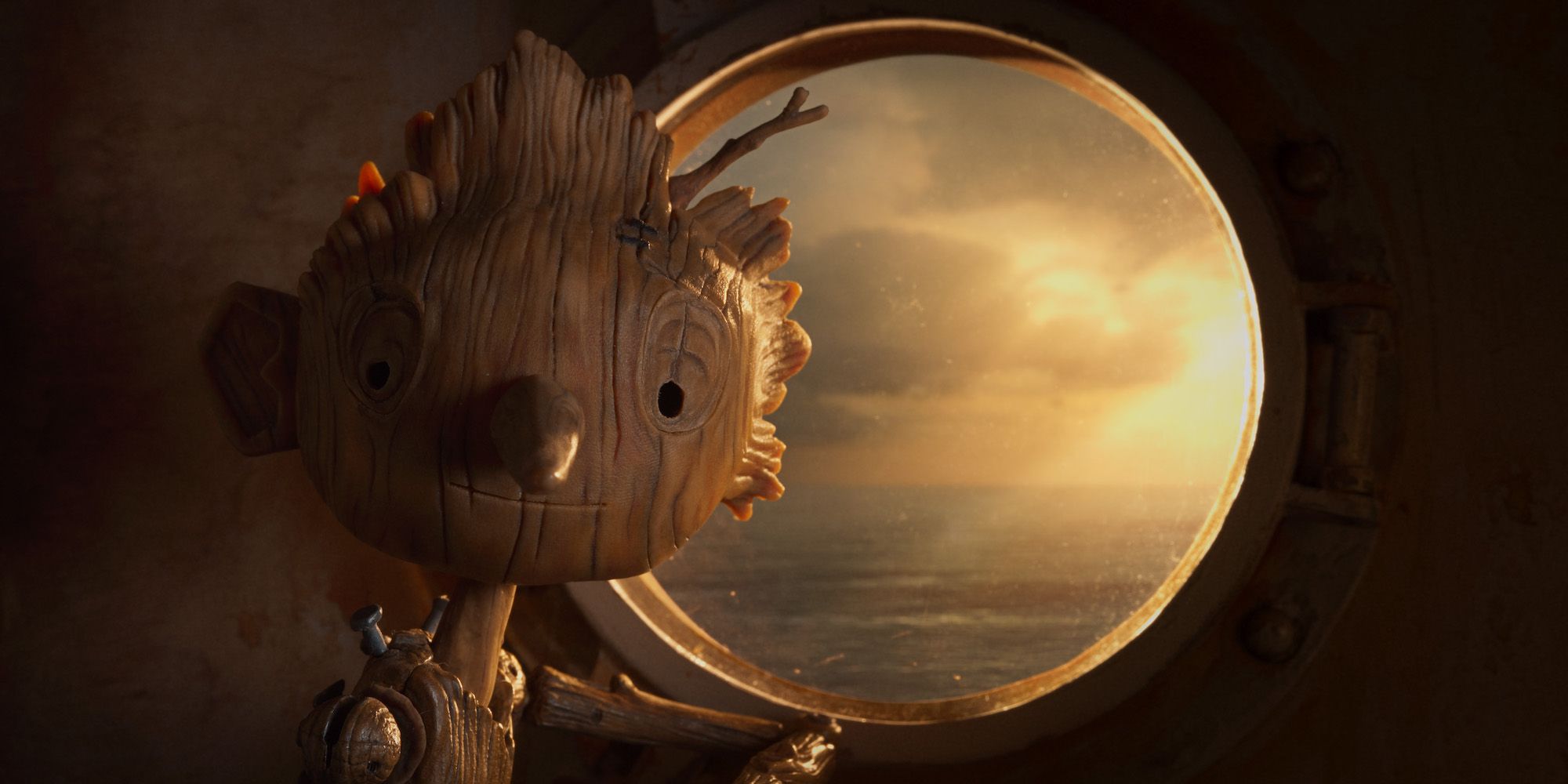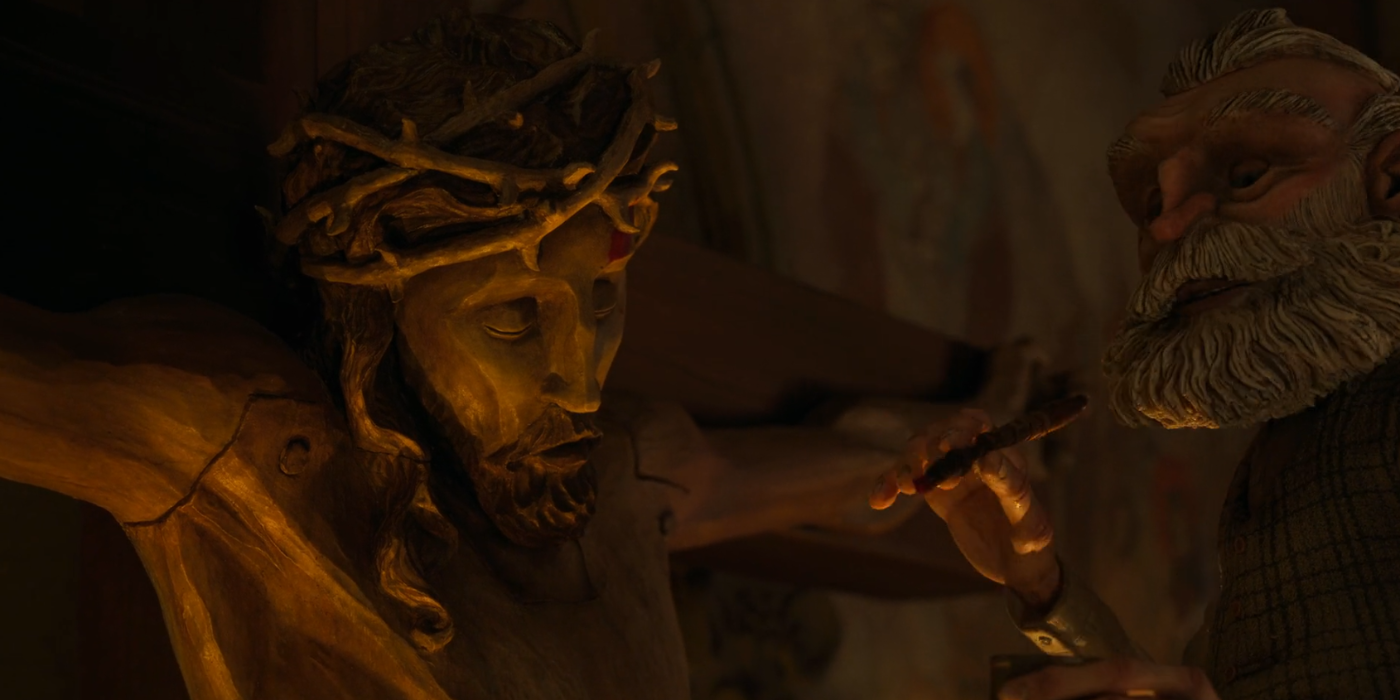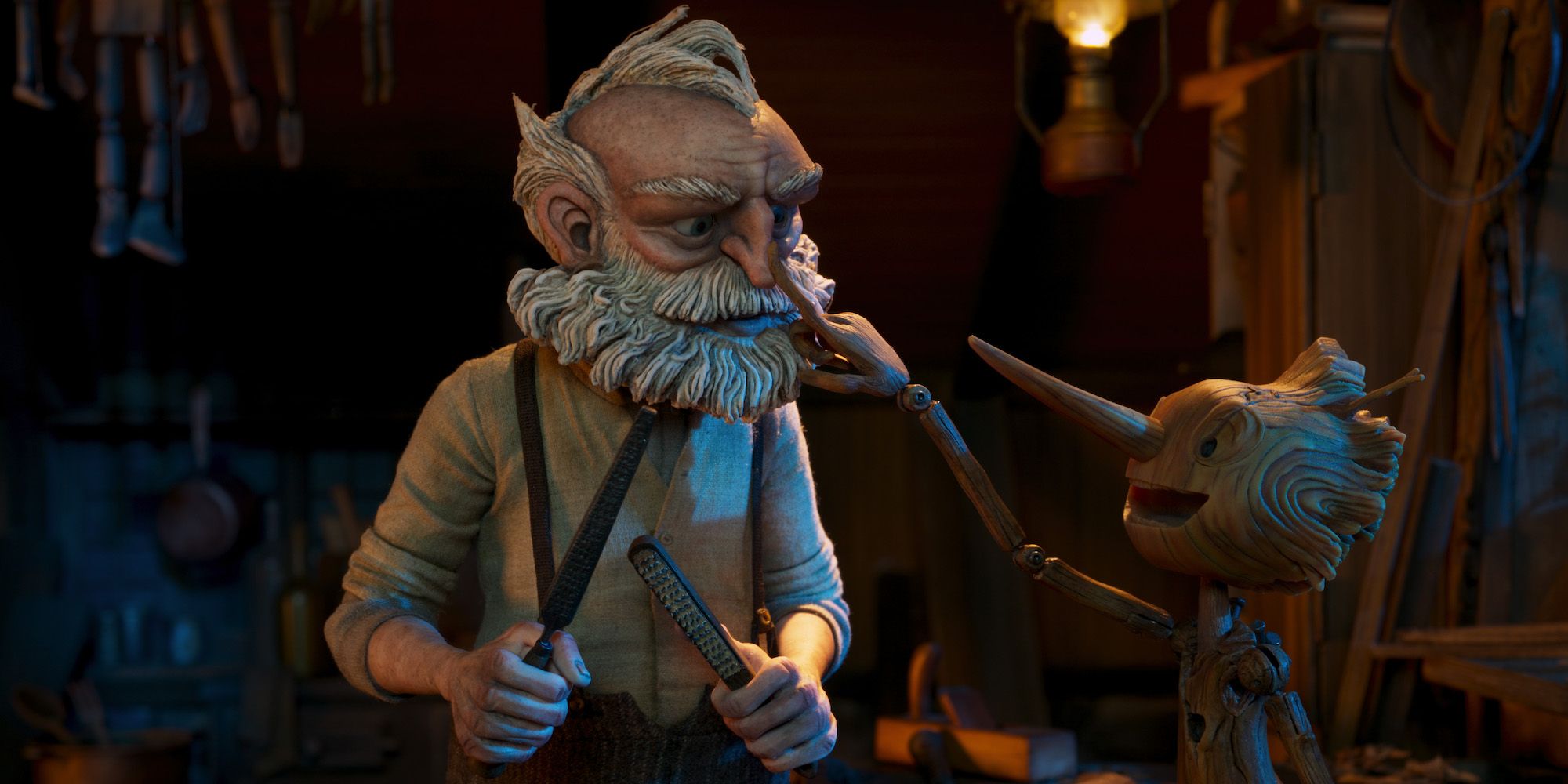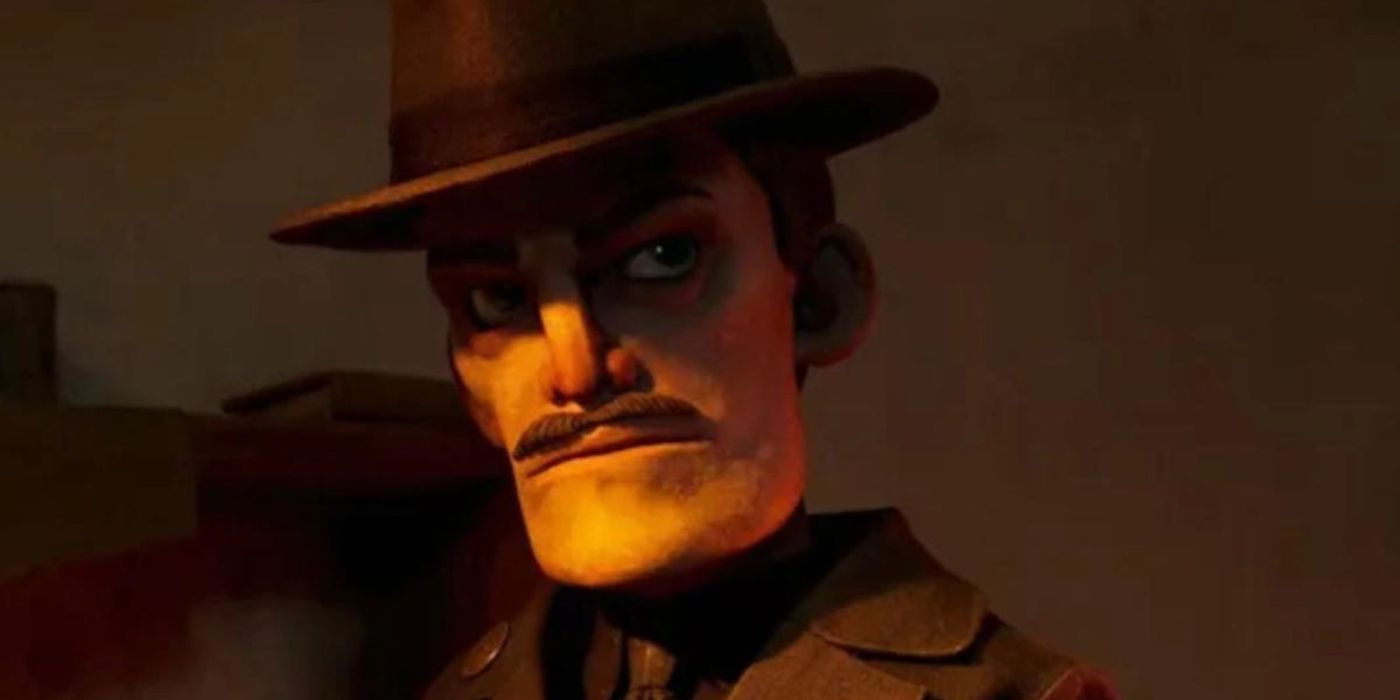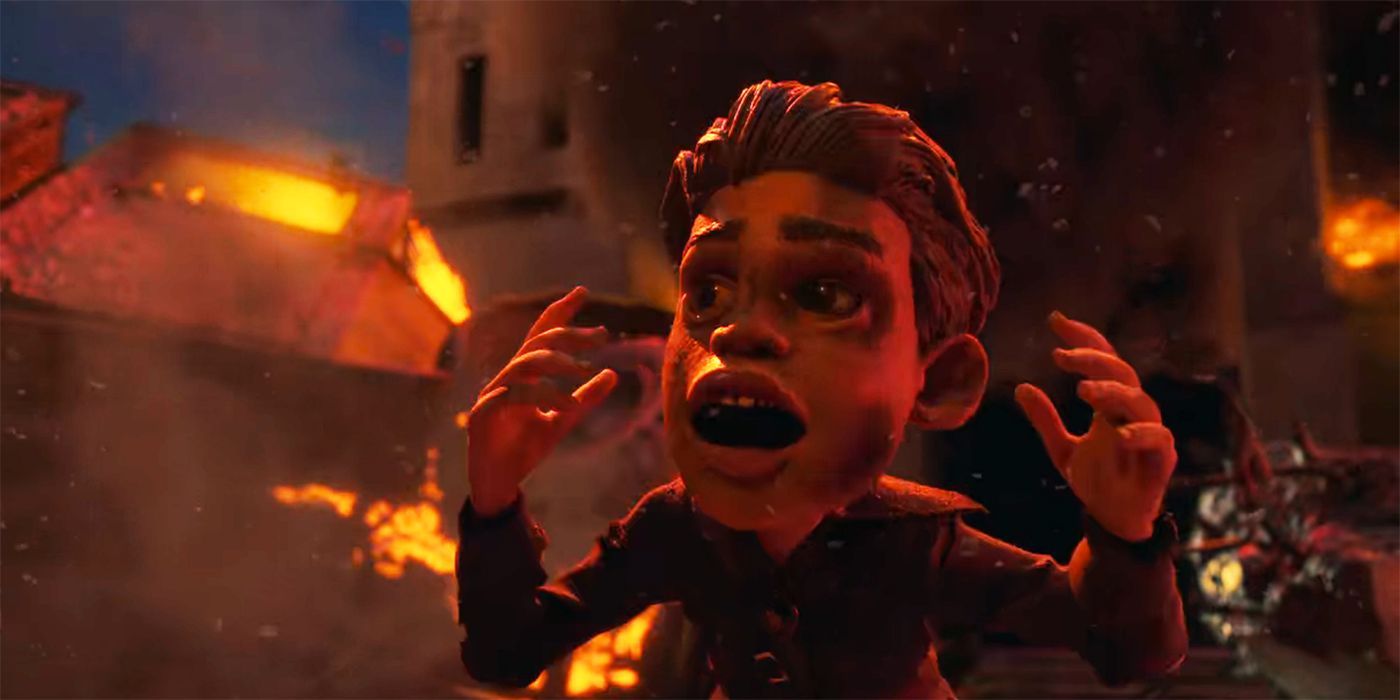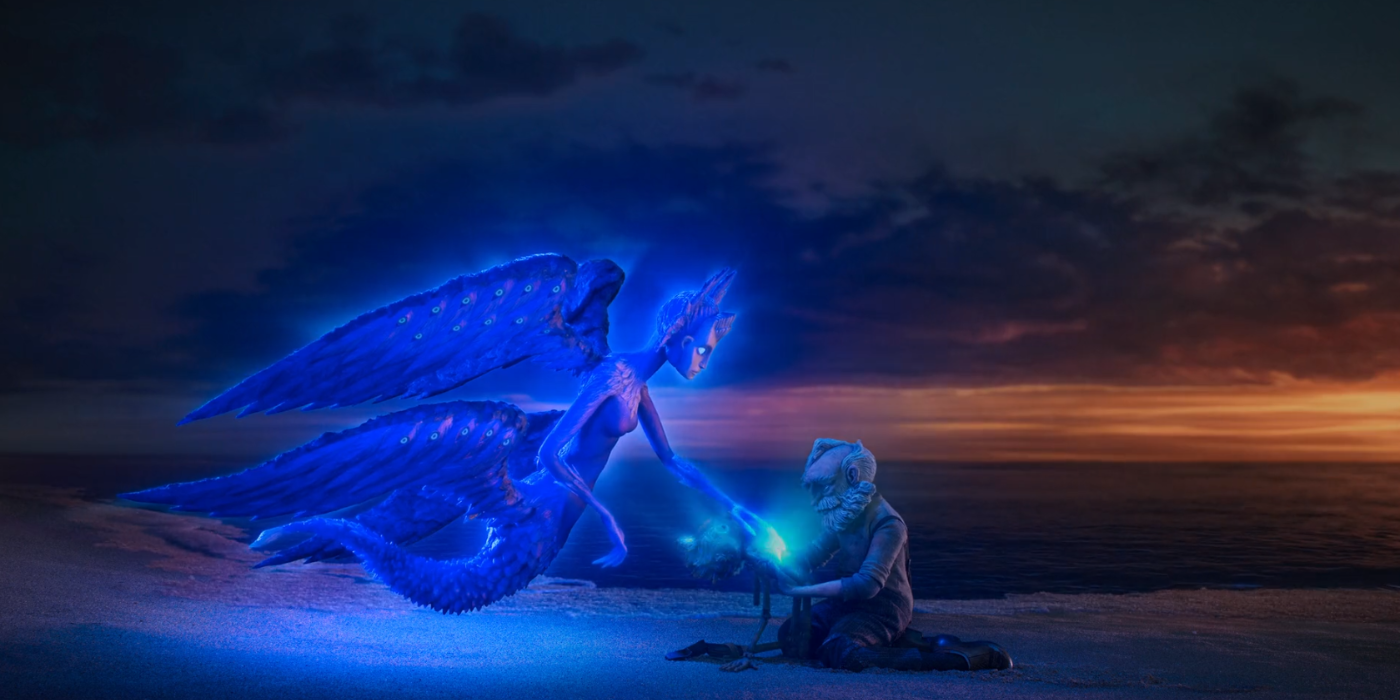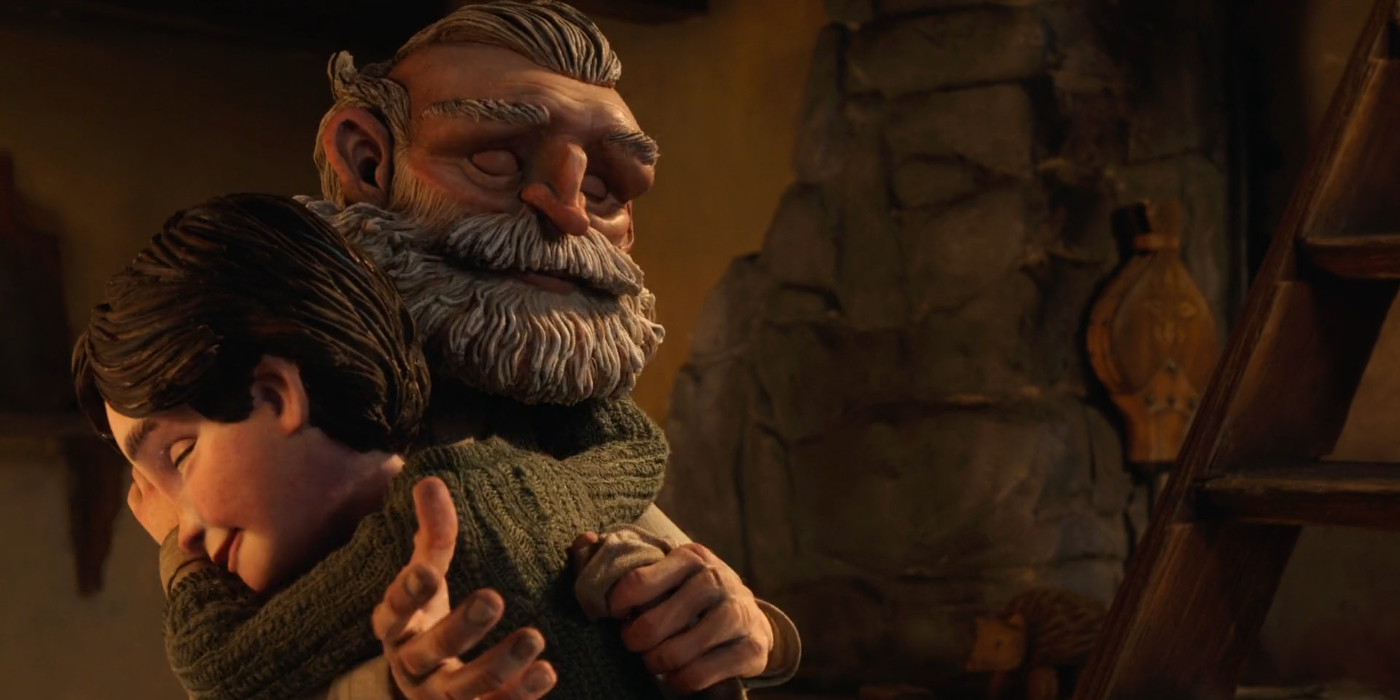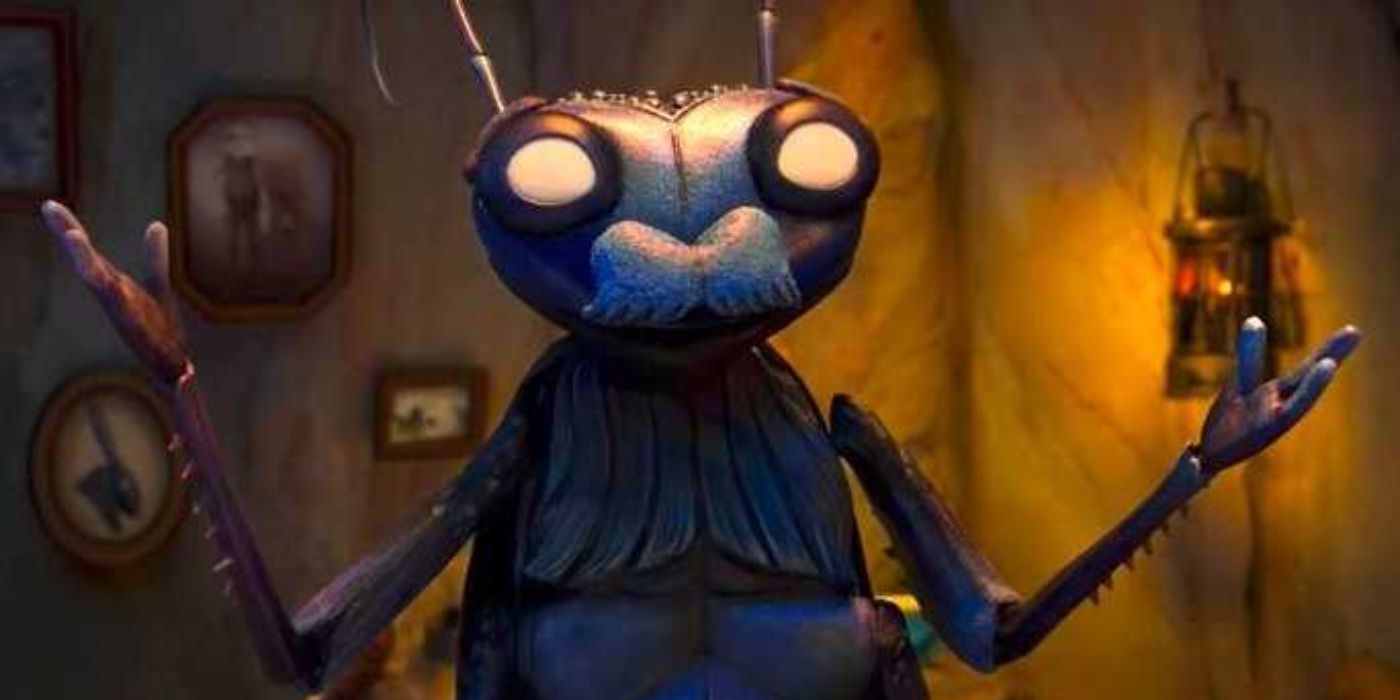Guillermo del Toro’s Pinocchio is out on Netflix to color the final month of 2022. The film is a celebration of life and death in stop-motion, a mesmerizing fable that covers the horrors of war and the loss of innocence but still finds time to delve deep into each character’s psyche and their existential matters.
With a range of inventive characters and heart-rending scenes, Del Toro balances visually stunning content with sharp dialogues that delicately deal with overlooked themes, offering plenty of memorable quotes.
Geppetto
Geppetto’s bedtime story to Carlo isn’t simply an important moral lesson but also the synthesis of Pinocchio’s lore. Turning metaphors into reality, the film introduces a wooden boy who must learn how to be a good person, and ever since Pinocchio’s original story, the distinctive way to deal with the boy’s inner dilemmas was to have him with his nose growing whenever he’d tell a lie.
It’s almost as if Geppetto’s words came to life, which adds up to the narrative’s mysticism and fable approach, delivering an important moral at the end.
“How Can You Lose A Whole Person?”
Pinocchio
Perhaps the pivotal moment in which both viewers and Cricket truly begin to connect with Pinocchio’s overflowing innocence is when the two characters share an intimate conversation about Geppetto’s past, as Cricket attempts to explain how death affects the lives of those who were left behind.
Pinocchio’s witty remarks in contrast with Cricket’s powerful words make the scene an impactful, yet delicate moment, including the concept of “burden” that will haunt each character in their own individual journeys.
“The One Thing That Makes Human Life Precious And Meaningful, You See, Is How Brief It Is.”
Wood Sprite
Although the Wood Sprite is arguably the most neutral character in Guillermo del Toro’s Pinocchio, the mystical creature steals the show every time it’s onscreen. Additionally, the way del Toro manages to deal with gloomy topics such as a death in a way children won’t be scared but rather inspired is truly fascinating.
Whenever Pinocchio dies, he accesses the Wood Sprite’s realm and the two share in-depth conversations about the fragility of existence and the burden of living forever. In the Wood Sprite’s first appearance, it offers an unbiased perspective about life to Pinocchio, explaining that life’s brevity is precisely what makes it so precious.
“He’s Made Of Wood Too. Why Do They Like Him And Not Me?”
Pinocchio
Guillermo del Toro took advantage of Pinocchio‘s magical story to address many subjects that would otherwise be overlooked in a typical animation, including war, fascism, intolerance, and of course, religion.
Being Italy such a devotedly catholic country, the image of Jesus is highly influential in the everyday life of Geppetto’s village, which culminates in a powerful reflection on the times of war; people get so lost in their ideals that they end up ignoring what’s right in front of them: their friends and family, humanity. Pinocchio is quick to see that, pointing out how the same people who worship Jesus’ wooden sculpture are the ones who dislike him.
“When He Called Me A Burden, His Nose Didn’t Grow.”
Pinocchio
Pinocchio’s kindness is what makes him one of the most sympathetic Guillermo del Toro creatures but also the easiest to let down. In a heartbreaking scene, Geppetto takes out his frustrations on the wooden boy, comparing Pinocchio to his deceased son and calling him a burden, which deeply upsets Pinocchio after Cricket defines a burden as something painful one must carry at all times.
Pinocchio’s most distinctive trait is his inability to lie; whenever he does so, his nose gets bigger and bigger. His condition is both a gift and a curse as it guides him to become a kind and honest person, but he’s not able to tell when someone is lying to him.
“Sometimes Fathers Feel Despair, Like Everyone Else.”
Pinocchio
Pinocchio begins to use his small lifespan of personal experience to change the lives of the people around him. The wooden boy is the only character who sees how Candlewick is left at the brink of despair by his father, and he explains to the kid that Podesta is also a vulnerable man like everyone else.
Guillermo del Toro’s Pinocchio can also be a dark tale about fatherhood, with Geppetto and Podesta representing two different extremes through the eyes of their respective children: Pinocchio admires Geppetto, Candlewick fears his father. The contrasting attitudes lead them to divergent paths, mostly because Geppetto was quick to understand that his despair should not get in the way of Pinocchio’s journey of self-discovery, as opposed to Podesta’s oppressive manners.
“Even Then With All The Fear I Feel, I Can Say No To You.”
Candlewick
Candlewick goes through an inspiring character arc, going from an insecure and spoiled child to an independent son who’s not afraid to stand against what he thinks is right. His father, Podesta, continuously oppressed him to become a ruthless soldier, but Candlewick learns how to say no when his friend Pinocchio is put in danger.
It’s unclear what Candlewick’s fate was, but he was brave enough to put his father’s mask down without hesitating, all the while proving himself to be a competent soldier and a loyal friend.
“Real Boys Don’t Come Back.”
Wood Sprite
Guillermo del Toro’s Blue Fairy was one of the most effective changes to the original story, turning it into the Wood Sprite and bringing the creature’s mysticism to a higher level. It takes over the position of mentor without taking sides, but viewers can hear in its voice how painful it is to the Sprite telling Geppetto he once again lost a child.
In every Pinocchio adaptation, Pinocchio’s ultimate goal is to finally fit in, to become a boy like the others, but Guillermo del Toro’s Pinocchio finds beauty in the absurd and the different. Real boys don’t come back, but the movie causes viewers to ask themselves “what does real really mean?”
“Don’t Be Carlo Or Anyone Else, Be Exactly Who You Are.”
Geppetto
Pinocchio’s most important message is accepting who you are and embracing the innocence of understanding the world by yourself. Pinocchio and Geppetto come to realize that together; the wooden boy was living under the shadow of what Carlo was, and Gepetto constantly tried to mold Pinocchio under his son’s image.
When the two realize what’s gone can’t be replaced, they’re overflowed with joy. Pinocchio embraces his true self and Geppetto learns to love the boy just as he is, achieving the happiest of endings through mutual respect.
“What Happens, Happens, And Then, We Are Gone.”
Sebastian Cricket
It’s safe to say that no one was ready for Guillermo del Toro’s Pinocchio impactful ending; everything was fine, and the story could’ve ended there, but del Toro knows Pinocchio’s story will never really end.
The words of Sebastian Cricket narrate time as it passes; lives are lost, but the world keeps blooming. Friends pass away, but they never really leave. Pinocchio carries on, unscathed, with still much to learn, although someday he will be gone too. The film ends on a nostalgic note, celebrating life’s brevity as the beauty of it, just like the Wood Sprite said, and Cricket represents the timeless voice of stories that will continue to be told forever.
Credit: Source link



